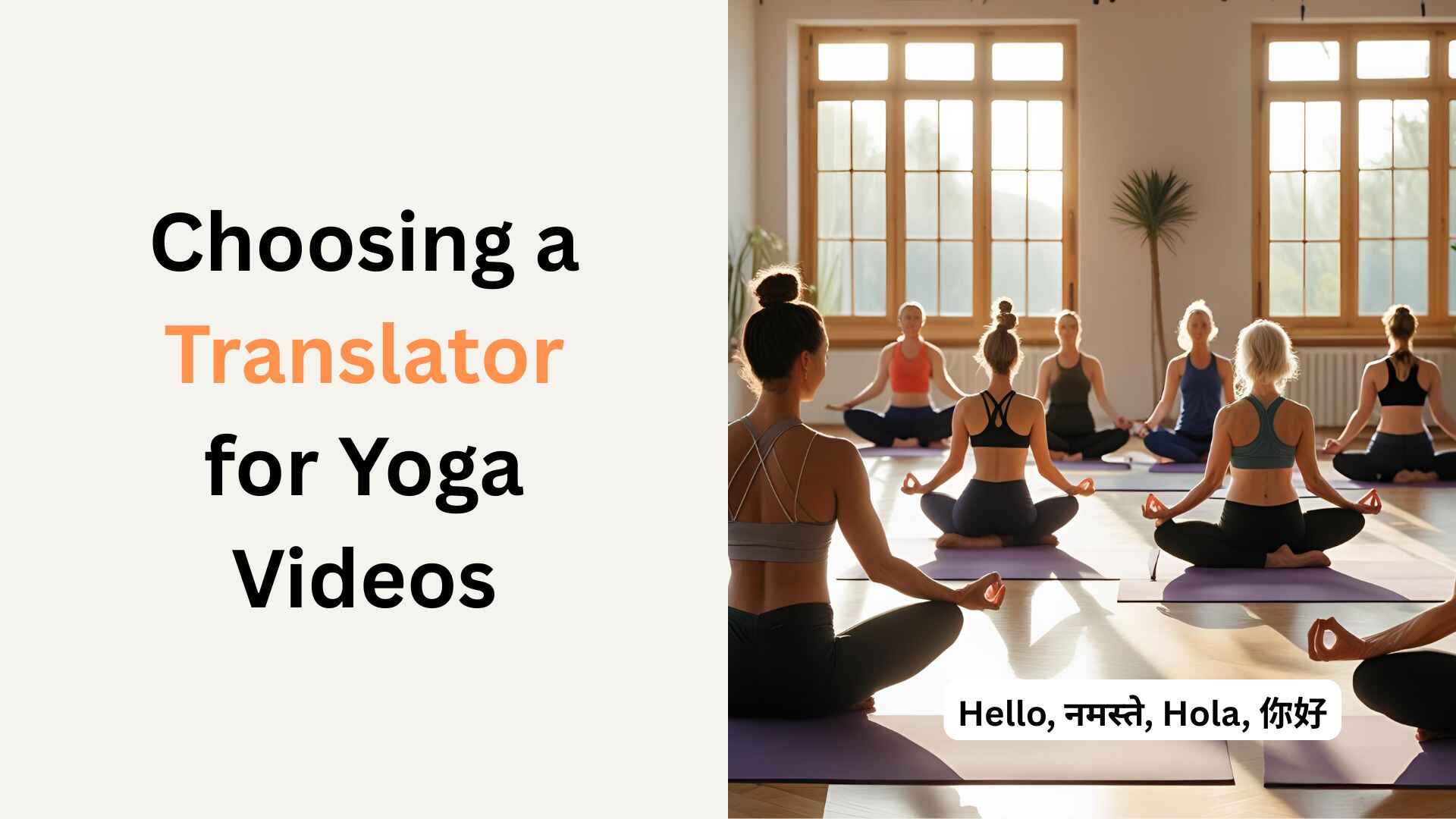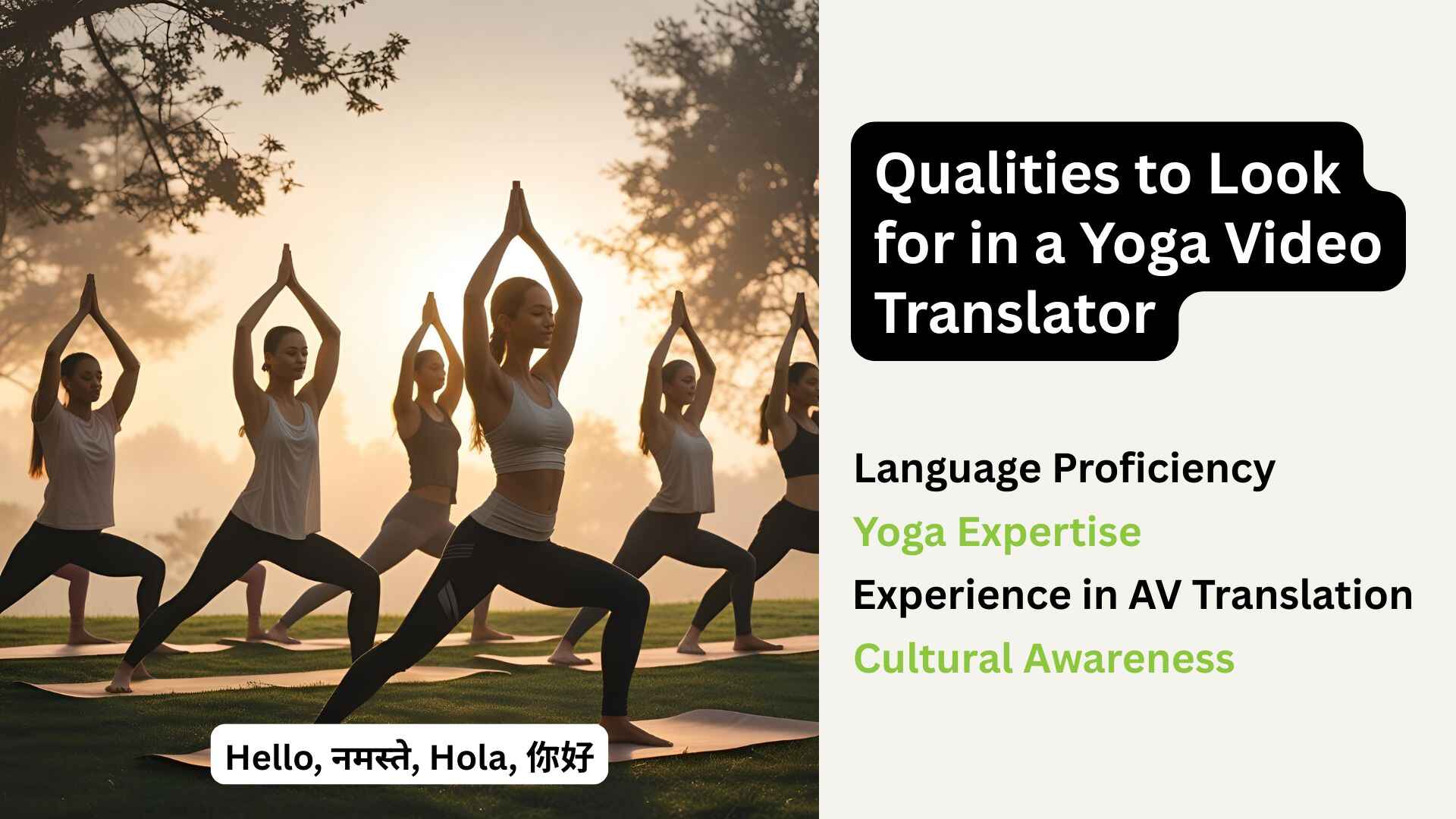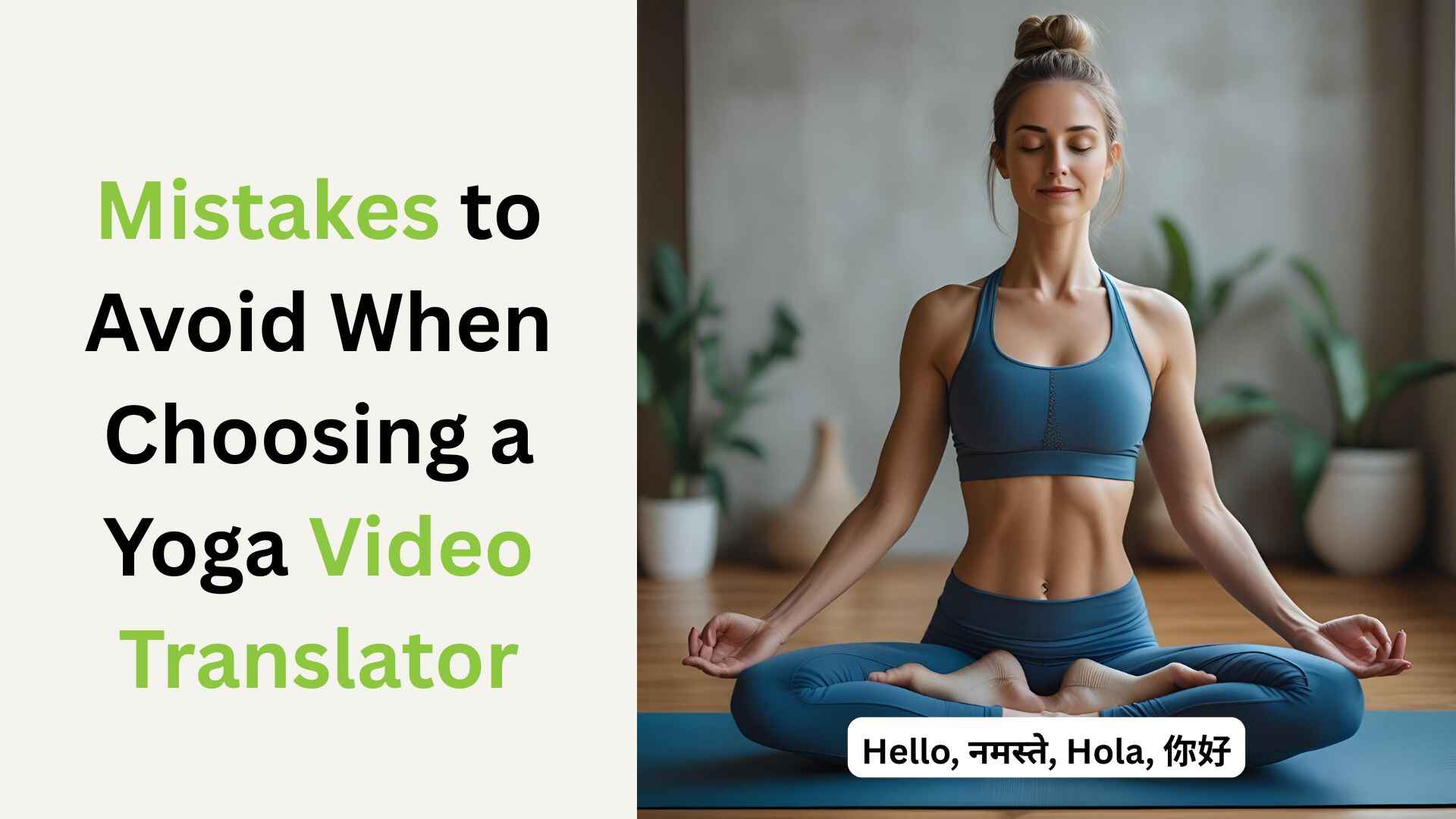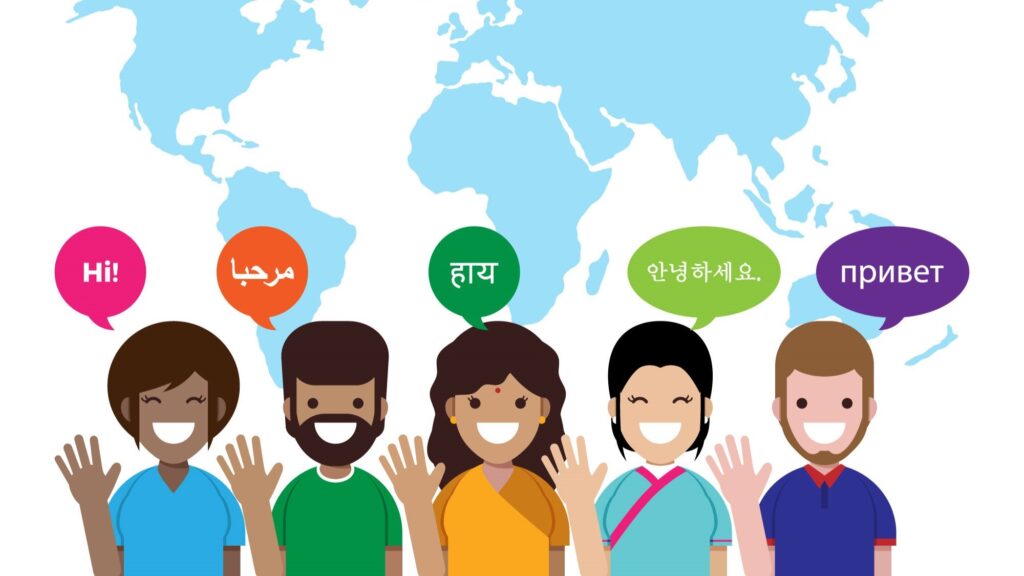
In today’s digital age, yoga has crossed geographic and cultural boundaries. As a yoga content creator, instructor, or brand, you want your teachings to resonate with a global audience. But there’s a key element that can either make or break that connection: accurate and culturally sensitive translation.
So, how do you ensure that your yoga videos speak clearly to international viewers—without losing their essence? This guide will walk you through how to choose the right translator for your yoga videos with ease.
Why Yoga Content Requires Specialized Translation
Yoga is not just physical movement—it’s a spiritual and philosophical journey. Most yoga videos include Sanskrit phrases, meditative instructions, and mindful breathing cues. A literal translation simply won’t cut it. Instead, you need a translator who understands both the language and the depth behind the practice.
Whether you’re teaching “Pranayama,” chanting mantras, or guiding through “Shavasana,” every word matters. It’s about preserving not just meaning, but energy and intention.
Qualities to Look for in a Yoga Video Translator

Choosing a translator goes beyond fluency. Here are some critical qualities to look for:
- Language Proficiency: Native or near-native fluency in both source and target languages.
- Yoga Expertise: Understanding of yoga terminology, postures, Sanskrit roots, and spiritual nuances.
- Experience in AV Translation: Skills in subtitling, dubbing, and script timing.
- Cultural Awareness: Sensitivity to spiritual, cultural, and linguistic variations.
These attributes ensure your message is translated with clarity and respect.
Types of Translation Needed for Yoga Videos
Depending on your content and audience, you may require different types of video translation:
- Subtitling: Adds translated captions while retaining your original voice.
- Voice-over Translation: A narrator reads the translated script.
- Dubbing: A new voice replaces the original, matching tone and timing.
- Script Localization: Adapts scripts to suit the cultural tone and phrasing of the target audience.
Each has its own purpose. Subtitling is cost-effective, while dubbing helps with immersive instruction.
How to Evaluate a Translator or Agency
Here’s how you can vet a translator or a professional translation agency for your yoga content:
- Portfolio Review: Check past work—especially within wellness or spiritual niches.
- Certifications: Look for recognized language qualifications or associations.
- Client Testimonials: Positive feedback and case studies indicate reliability.
- Sample Translations: Ask for a short translated segment to judge tone and quality.
If possible, work with translators who practice yoga themselves—they’ll naturally align with the flow and philosophy.
Cultural Sensitivity: The Key to Connection
A culturally insensitive translation can alienate your viewers. Your translator should:
- Avoid literal translations of Sanskrit or spiritual concepts.
- Replace culturally irrelevant metaphors with local equivalents.
- Ensure gender-neutral and inclusive language where appropriate.
- Be mindful of religious or regional variations in practices.
This thoughtful approach enhances relatability and respect across global audiences.
Mistakes to Avoid When Choosing a Yoga Video Translator

To avoid wasting time and resources, steer clear of these common mistakes:
- Using Machine Translation Tools: AI-generated translations often misinterpret spiritual or contextual language.
- Hiring General Translators: Not every translator can interpret yoga’s unique tone.
- Ignoring Audio Quality: In voice-overs and dubbing, tone, pace, and energy are vital for a calming user experience.
Why Professional Translation Services Matter
Hiring a specialized agency brings several advantages:
- Expert Teams: Get access to linguists, yoga experts, and voice artists.
- Quality Control: Editing and proofreading ensure consistency.
- Tech Support: Proper formatting for various video platforms.
Services like VerboLabs provide high-quality yoga video translation, voice-over, and localization Services—ensuring that your message is pure, impactful, and global.
Conclusion
Translating your yoga videos is not just a technical task—it’s an artistic and spiritual responsibility. From preserving meaning to connecting with global students, the right translator is your bridge to a wider, more diverse audience.
Take your time, research, and choose someone who not only speaks the language—but also speaks yoga.

Ready to Translate Your Yoga Videos?
VerboLabs offers professional yoga video translation, dubbing, and subtitling services tailored for spiritual and wellness brands.
Let your voice reach the world—without losing its soul.
👉



